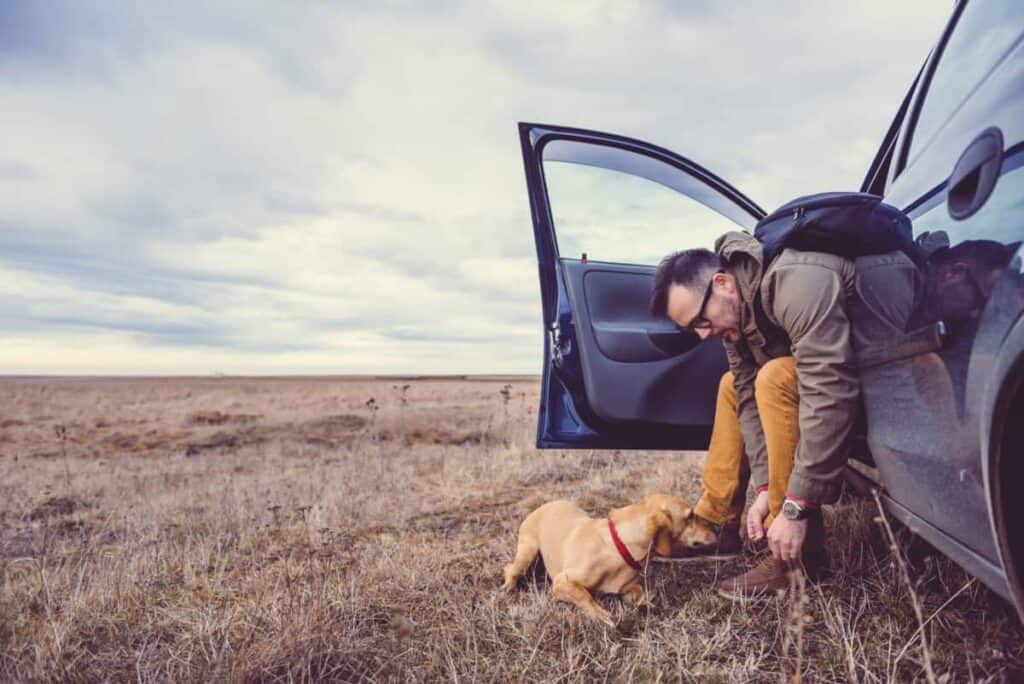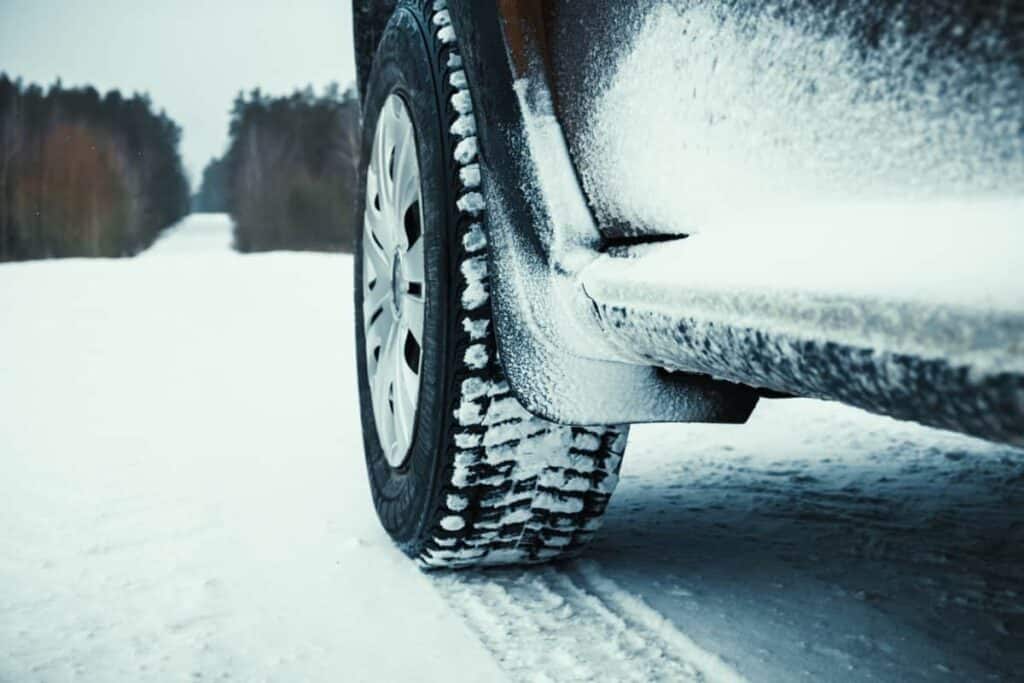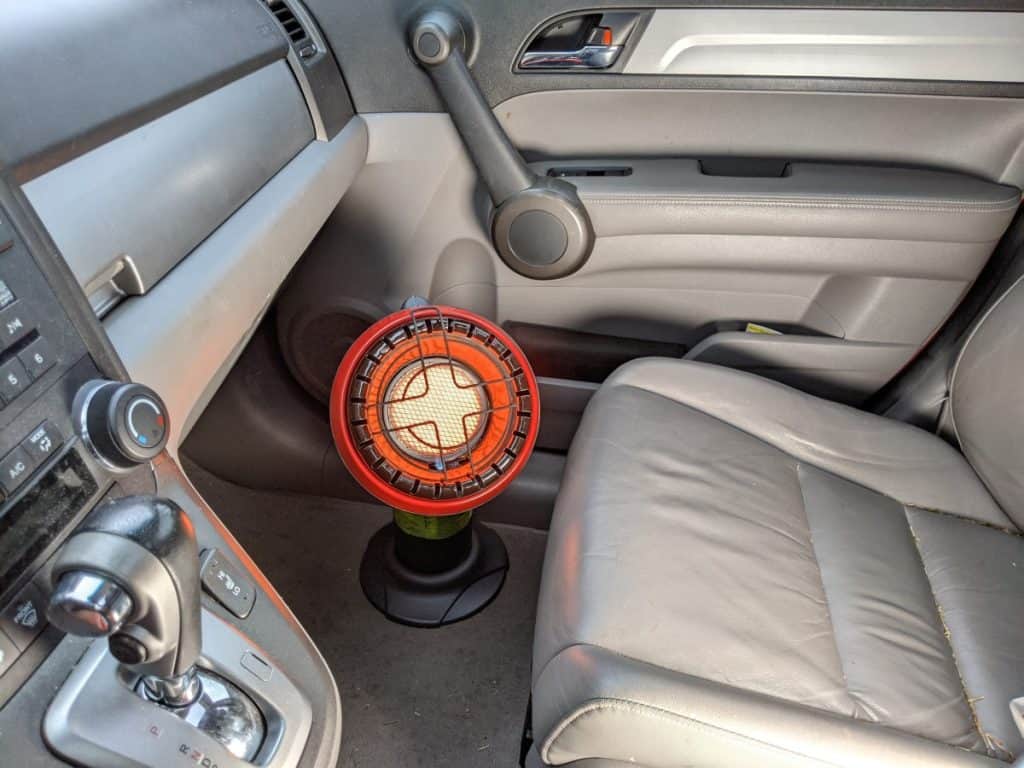You could have a legitimate reason to stay in your car overnight while it’s cold out. Maybe you don’t have anywhere else to go, you’re trying to survive, or you need to save money. As a close friend once said to me: “It’s not an adventure until something goes wrong.”
The best way to stay warm in your car when it’s cold is to both insulate and heat your car and yourself simultaneously. By using insulation like snow, space blankets, and warm clothing, you can trap the heat you’re generating using things like portable heaters, candles, and body heat.
Before you get started! Don’t forget there are risks to sleeping in your car in cold weather. Anything under -30 Fahrenheit is probably unwise. But you can get away with pretty rough temperatures, if you’re prepared. Make sure to read the entire article so you know how to prepare your car and yourself.
By the way, as an Amazon Associate, I earn when buying qualified products through links on my site.
Key takeaways
Creative Ways To Stay Warm in Your Car
Before we get into specifics, here is a shortlist of free, creative ways.
Bring Your Dog
Do you remember that one scene in Star Wars where Luke has to kill and cut open his Tauntaun to survive the cold weather? Or where Hugh Glass (played by Leonardo DiCaprio) in The Revenant had to sleep inside a horse? Turns out it’s pretty effective. You can replicate this by bringing Man’s-Best-Friend and sleeping comfortably by them in the car. No need do what Luke had to do, though; you’re too prepared for that because you read this article!

Get Up High
I learned this trick from a website called “WeeksOutdoors” (the article can be found here). We all know from our high school science classes that hot air rises, so try to build a platform or use a cot to raise yourself as high up in your car as possible to get as much warmth as possible.
Use Bottled Boiling Water
Boil some water and put them into tightly closed water bottles. You can place them under your blankets and sleeping bag to quickly heat up yourself. You can put this water in a regular plastic bottle as opposed to a vacuum-sealed heat resistant water bottle, which will not allow heat to pass through effectively. The plastic might warp and twist a bit, but it will not explode or melt.
Use Hot Rocks
I’ve done an article about how to use rocks to heat up your shoes and socks when they get wet (found here), but you can also do this to heat up your car! Place a few rocks on the side of a fire, use tongs to pull them out and place them on top of a few other cold rocks on your car floor where they will not be touching anything else in your car. This is an extremely easy and effective way of heating up your car in a pinch.

Effective Ways to Insulate Your Car
There are multiple ways to counteract losing heat from inside your car. Generating heat inside your car means nothing if you cannot keep it there. Here are a few tips to keep much-needed heat where it needs to be.
- Cover the outside of your car with your tent to provide a good outside layer from the elements.
- With a shovel cover the tent around your car with snow. Believe it or not, snow is an amazing insulator. Think about how bears and other animals survive the winter when they hibernate. This is because snow is composed of a good amount of air trapped in the snow crystals, and since this air cannot move heat transfer is minimized. Just make sure to give the exhaust pipe and its surrounding area a wide berth.
- Cover your front and side windows with reflection insulation foam from the inside of your car.
- Apply a layer of space blankets around the windows, making sure to allow some spaces to be open so that a good amount of air can escape to prevent condensation buildup and create a healthy airflow. You should also wrap yourself in a space blanket as well, especially your feet.
Helpful Products To Keep You Warm
As opposed to the items listed above, these are the items you most likely don’t yet have. I recommend getting them before you plan on going on an adventure into cold and wintery areas.
These don’t need to be in your car year-round but should be seriously considered as you prepare to go to leave. I will be sourcing products from my own personal use as well as from the highest product ratings on Amazon.
Portable Heaters
I just purchased this heater on Amazon from Mr. Heater. It is the de facto small indoor space heater–I will report back how it performs and how safe it is as soon as I get the chance to try it out.
Here at DecideOutside we have written a few different articles about using heaters in enclosed areas. Here is an article about if it is safe to use a heater in a tent, and here is an article about if it is safe to use something called a catalytic heater (this sort of heater converts propane into heat using a catalyst).
I tested the Little Buddy inside my car, check out more details, here.

Alternatively, I did a video showing how I used an industrial gas detector with these propane gas heaters inside a tent as well as inside a car in my video, here:
Overall, you should use a catalytic or radiant heater in your car if you have to use one because they do not create as much carbon monoxide, (You should crack your windows a palm’s width (about 3 inches) and they should not be used when you are sleeping. Using an electric heater is not the best option for car campers because of the use of the car’s battery to charge the heater, but fear not; there are many other options available to you!
Just to reiterate, any gas-powered heating source (including catalytic heaters) presents risk. Always ensure you have ventilation and don’t use them while sleeping. If you need to use them, turn them on for a few minutes to warm up as needed only.
Space Blankets
Space Blankets: These are wonderfully small and cheap blankets that work great for car campers and hikers alike. I used a few of these “Mylar Thermal Blankets” when I was hiking in the Canadian Rockies this last summer, and I swear that having these wrapped around my feet at the end of a long and cold hike without the proper footwear saved my toes from freezing off. They are known to be able to retain 90% of the user’s body heat, protecting against hypothermia and shock. I got this product off Amazon for a nice price.
Hand Warmers
These are more widely understood as helpful for any event from marathons to hiking trips, from tailgating the next football game to surviving in the brutal North. I keep this Amazon product in my car all the time just in case I need them for the great price of 40 pairs for about $23. These are most helpful to use with warming your hands and feet when you are hiking through the sleep or at the end of the night when you need an extra source of heat.
Electric Blanket
Electric Blanket: This is an interesting one that I hadn’t thought about until I started to research the subject, and it seems that products such as this on Amazon are widely used for winter car camping. What I would suggest is to use this to heat up your sleeping area as you are driving to your destination and charge it up right before you go to sleep and then unplug it when you want to go to sleep. Most products will stay toasty for a good amount of time and it won’t drain your battery if you unplug it after charging for a half-hour or so.
Solar Power Bank
If you’re serious about making it through really cold nights, you can use a Solar Power Generator (See examples on Amazon) which can support an electric blanket like the one I listed above for long periods of time. The last thing you want is to drain your own car battery.
These solar power banks can be recharged with solar panels (or your car if you’re driving) throughout the day.
Reflective Foam Insulation
Reflective Foam Insulation: You can buy this stuff here on Amazon, or, since you don’t need too much of this material to cover your windows, I would suggest getting this at your local hardware store and cutting it to size for your front and even side windows. This product is able to reflect up to 97% of the heat in your car from escaping outside, so this will radically heat up your car, even to the point of making it a mini-oven system.
Taking all of these items with you, especially this foam, will give you a restful and comfortable rest in your car during the harshest of wintery nights.
How Cold is Too Cold to Sleep in My Car?
My friend who helped me write this article has lived in Michigan for his entire life. He has traveled to Canada for dozens of camping trips with and without a tent, so he definitely has some ability to speak to what is simply too cold to car camp in. I would conclude that anything less than -30 degrees Fahrenheit would be unwise. Wind chill can make this factor change by a good amount of degrees, but either way, you should probably not allow yourself to be caught in this sort of cold weather; and if you do, you will have the supplies to last you through the late night because you have read this guide through and through.
Should I Run The Heat In My Car?
Briefly, but do not rely on this. Here are a few reasons for staying away from using your heat more than briefly:
- Turning on the engine and using your heat will drain a fully gassed up vehicle within 5 hours (depending on the size of the fuel tank and the efficiency of the engine).
- If there is anything blocking your exhaust pipe, such as snow, there is the possibility that you will die of carbon monoxide poisoning.
- From constantly heating and cooling your engine by using heat and then turning off the heat you run the risk of freezing your engine.
What to Always Keep in your Car For An Emergency
This is meant to be a list of items that are most likely easy for you to find around your house already and won’t cost you any extra money. These are all extremely helpful to have for yourself and your passengers in your car all year round in order to be ready for any situation that may arise.
Make sure and check out the best rated emergency gear for your car here on Amazon in case you get caught in a bind.
- Gloves: You can’t set up the rest of the materials and strategies listed in this guide without warm and functioning hands, so bring a couple of gloves with you. I would suggest a slimmer, athletic pair of gloves to do work that requires more precise handling, and then bulkier gloves you can wear over them for extra protection.
- Hats: We lose somewhere between 10-20% of our body heat through our uncovered heads (contrary to an old US military figure of around 45% or above). Bringing a few knit hats for you and your passengers is an extremely helpful way of keeping warm.
- Socks: These can double as effective gloves or be used when you have wet socks to really help warm up your toes.
- Flashlight: This is an obvious choice for any car owner in general, especially for a car camper because you want to be able to find what you are looking for fast when you are spending the night in your car in the middle of winter.
- Extra Batteries: These are helpful for you to keep your other items and products working well. What’s the use of bringing all of these helpful tools if you can’t power them? Keep a plastic bag full of duplicates of each of the types of batteries your items use and always keep them in a safe place.
- Wool Blankets: These are great blankets when they are kept dry, and because you are staying in your car you should be dry and extremely warm with a few of these kept in your car year-round.
- Extra Packed Food: To keep your heat and energy up it is important to have a supply of carb-loaded food to last you through the long, cold nights you might have to be ready for when car camping. Your body is doing its best in conserving energy when trying to keep more, so give yourself a fighting chance and bring some extra snacks around.
- Headlamp/Lanterns: These are a bit handier than flashlights because you don’t have to take up one hand holding a headlamp, so you are given the option to work on prepping the inside and outside of your car for the night with more ease and comfort. You truly can’t go wrong with getting a nice headlamp on Amazon, but just be sure to bring with you extra batteries.
- Candles: You could create a handy collection of small, tin candles and waterproof matches inside of a small tin container. You could pull these out as a secondary heat source in an emergency, using a few candles at a time inside of the container to concentrate the heat further so that it is more effective at heating your car.
Considerations When Camping in Your Car
As a closing thought, here is a list of the most important things to remember when you are planning on camping in your car in a cold area overnight. Each of these bullet points can be found in the article above in the same order that they appear here.
- It is much better to over-prepare for a situation and have more than you need than to under prepare and realize you need something you don’t have.
- Crack your windows open so that there is no possibility of CO2 poisoning and there is no condensation buildup.
- Carefully consider when and where you plan to travel to. Avoid extremely cold areas that could have flash snow-storms at a moment’s notice, and be sure to contact local park rangers about the conditions at said location.
- Car Camping is a wonderful idea because there are so many places you can go to do it and it is extremely cheap to do so!
- There are many ways to keep yourself warm in the car, such as insulation, having a warm dog or person next to you, being higher up in the car, using hot rocks to warm your sleeping area, or using boiled water in bottles to heat up your sleeping bag.
- You should always keep a collection of gloves, socks, and hats in your car for multiple people, as well as a flashlight, extra batteries, wool blankets, and extra food.
- Before going on a trip to a place where the temperature is in the negatives or single-digit positives, be sure to gear up with products such as portable heaters, space blankets, hand and feet warmers, reflective foam insulation, a headlamp or two, and extra candles.
- Anything below -30 degrees is unwise to sleep in and should not be attempted.
- A car is warmer than a tent, but a car with a tent is warmer than both.
- A candle is not useful to heat a car, but it is a wonderful way to find comfort.
- You should not rely on running the heat in your car, because being warm at night but stranded in the morning with a gasless car is not helpful.
- If necessary, insulate your car with reflective foam, space blankets, a tent, and snow, while allowing for air to pass through a cracked window.
